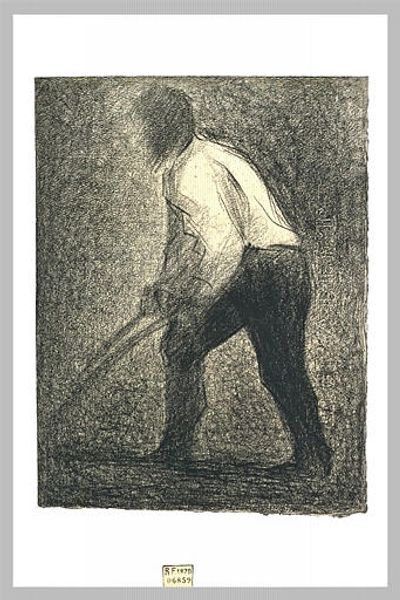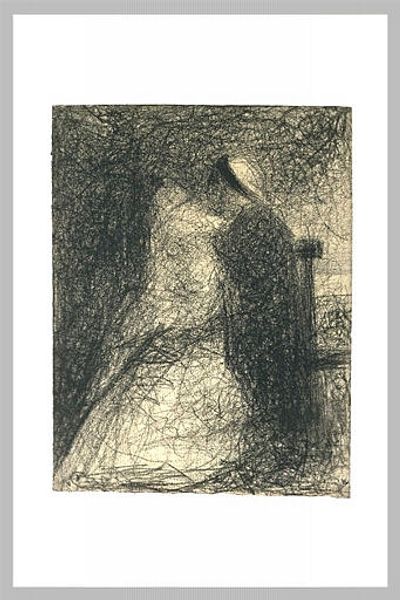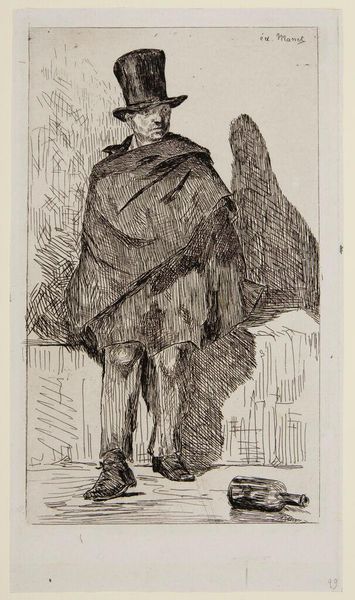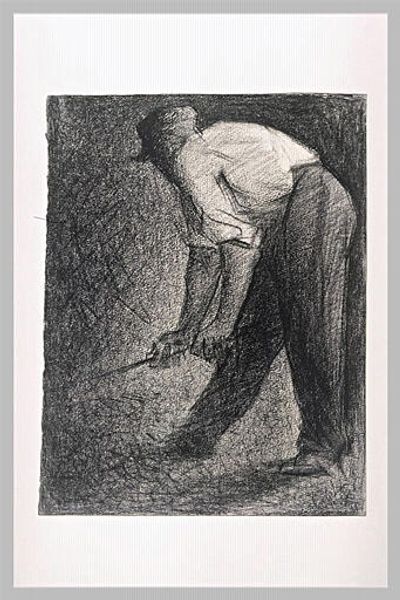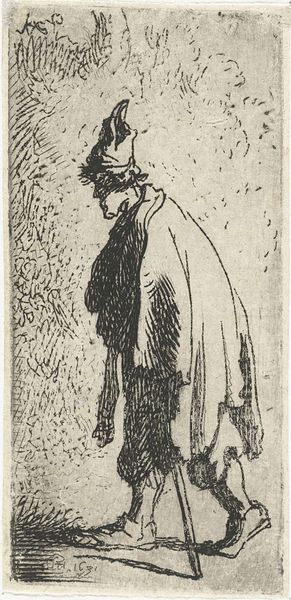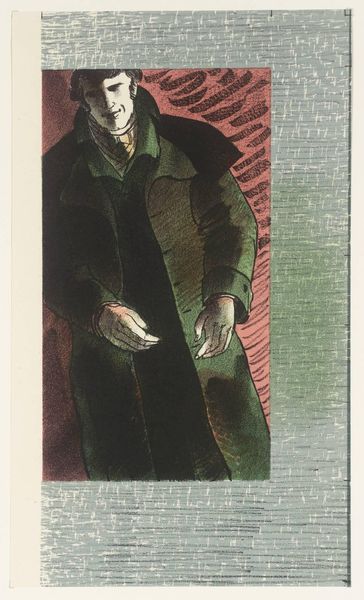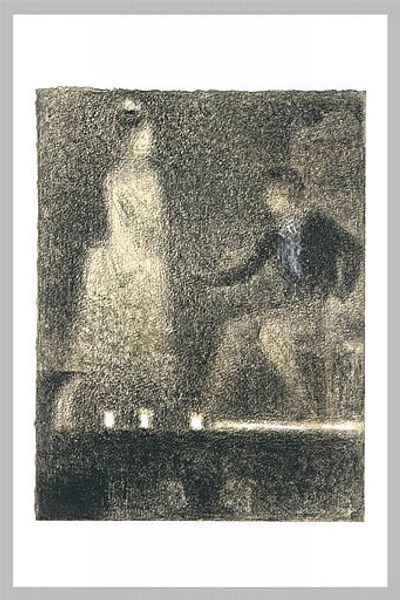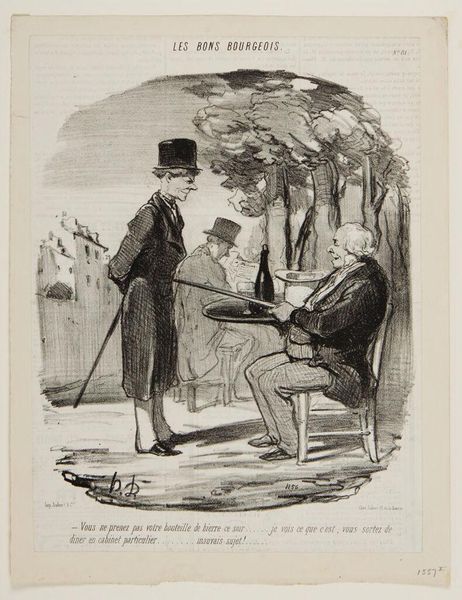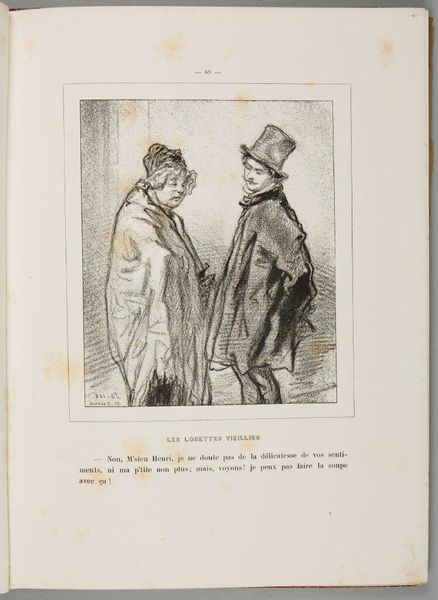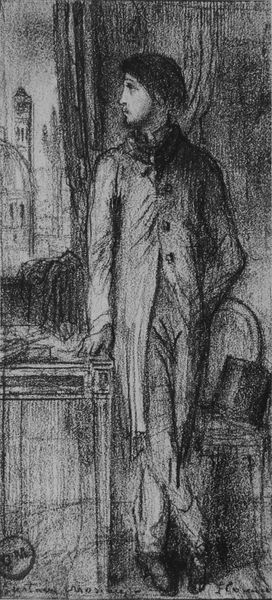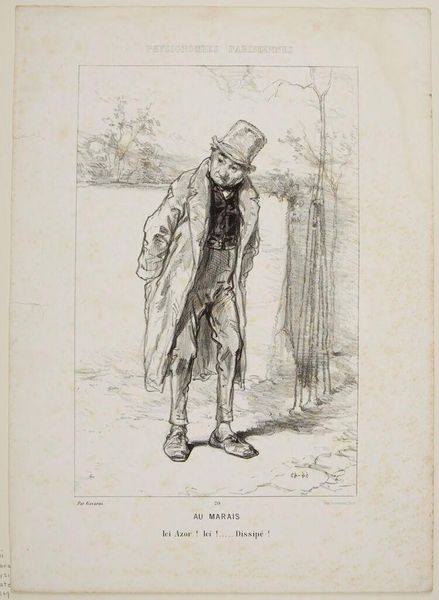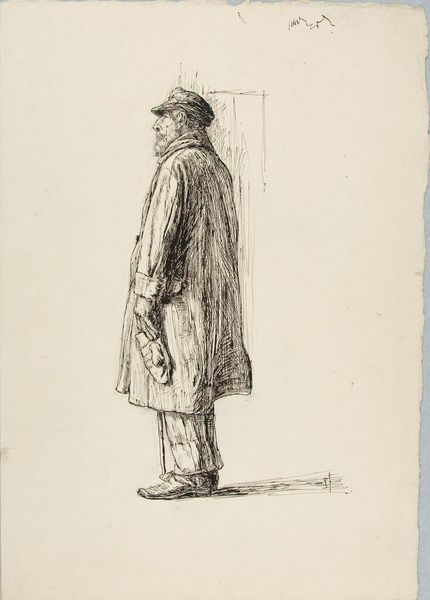
drawing, graphite
#
portrait
#
drawing
#
impressionism
#
figuration
#
ashcan-school
#
graphite
#
realism
Dimensions: 31.4 x 25 cm
Copyright: Public domain
Editor: We're looking at Georges Seurat's "The Seller of Oranges," created in 1881 using graphite. It has this wonderfully subdued and almost melancholic feel to it, doesn’t it? What do you see in this piece? Curator: It whispers, doesn't it? A portrait, yes, but almost a social commentary too. Notice how Seurat uses light – or rather, the absence of it – to cloak the seller. It's a beautiful study in values, those subtle gradations achieved with just graphite. What do you suppose this says about the unseen lives in a bustling city? Editor: So, you're thinking beyond the literal and into the emotional landscape? It seems very aligned to a Realism approach to art making. Curator: Precisely. It transcends simple observation. Think about the "Ashcan School," even though Seurat predates it somewhat. They too celebrated the mundane. Is it not remarkable, the level of narrative packed within a seemingly simple portrait? Almost like peering into the seller's soul and understanding their everyday plight? Editor: I hadn’t considered the relationship to later art movements before, thanks. It adds layers that might be invisible to the untrained eye. What I also enjoy about the work is the graphic tonality - a feature which I believe distinguishes his works. Curator: Isn’t it wonderful? And that graphic style became Seurat's signature! Makes you wonder about all the unseen sellers around us, and how art can help us pause, look closer, and perhaps even connect. Editor: Absolutely! I'll definitely be looking at Seurat's work with a different perspective now. Thank you.
Comments
No comments
Be the first to comment and join the conversation on the ultimate creative platform.

